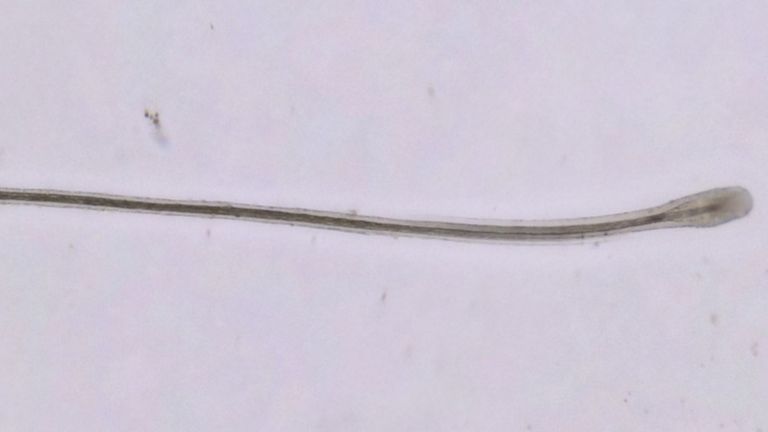Thanks to scientific breakthroughs in Japan, new treatments for hair loss could be developed, researchers say.
The team, which spans several universities in the country, has been studying the process of hair follicle growth, hoping their work may help in the manufacture of regenerative medicines.
A study published in the journal Science Advances shows that they have succeeded in generating hair follicles, which are essentially anchors that hold hair on the scalp and elsewhere.
Follicles are created in “culture,” the scientific term for under controlled conditions rather than in their natural environment, but now researchers hope to replicate the breakthrough with human cells.
It could open up new research avenues for the development of new treatment strategies for hair loss disorders, including alopecia, This affects both women and men.
The team hopes their work will also help understand how and why some people lose their hair.
“Our next step is to use cells from humans and apply for drug development and regenerative medicine,” explains Junji Fukuda, a professor at the Faculty of Engineering at Yokohama National University (YNU).
How did scientists make this discovery?
The key to the breakthrough are cultures called organoids — these are tiny, simple versions of organs that scientists can make for laboratory research purposes.
These organoids are designed to recreate the structure and physiology of human organs, while researchers have traditionally relied on animal models.
They were a “promising tool” that helped the team achieve such promising results, said Tatsuto Kageyama, an assistant professor at YNU’s School of Engineering.
Read more tech news
Amazon faces £900m lawsuit in UK for using ‘self-benefiting algorithm’
UK regulator wants your opinion on Microsoft’s deal to buy Call of Duty maker
Spotify users report spike in blackouts as Taylor Swift’s new album releases
Hair follicle organoids are created using a low-density “extracellular matrix” — the framework that provides structure to cells and tissues in our bodies.
This all helped the team get as close as possible to the process and environment needed to recreate hair growth, while still being in a controlled laboratory environment.
The end result is hair follicles and hair shafts that grow at almost 100% efficiency, reaching about 3mm in length after 23 days.
Then they also added a drug that stimulates melanocytes—the cells that produce hair color. These results are again very promising, improving the appearance of the lab-made fibers.
